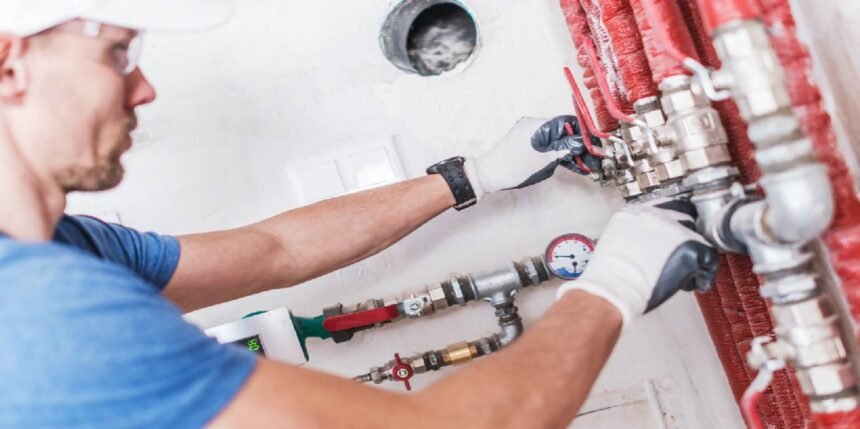Natural gas is a convenient and efficient energy source used for heating, cooking, and powering various appliances in both residential and commercial properties. Despite its benefits, natural gas is highly flammable, and when gas lines malfunction, they pose serious safety risks, including explosions, fires, and health hazards. That’s why understanding the signs of gas line issues and knowing how to properly address them is crucial.
This article explores the causes of gas line damage, warning signs to watch for, repair processes, and preventative measures to keep your gas system running safely and efficiently.
What Are Gas Lines and Why Are They Important?
Gas lines are an integral part of any property that uses natural gas. They transport gas from the main supply to various appliances throughout a home or building. These pipes are usually made of durable materials like steel, copper, or polyethylene, and while they are built to last, they are not immune to damage or degradation over time.
Whether underground or above ground, gas lines are subject to wear and tear due to external environmental factors, usage, and age. When a gas line becomes compromised, the potential for leaks increases, creating dangerous situations if not addressed quickly and professionally.
Common Causes of Gas Line Problems
Several factors can contribute to gas line damage. Understanding the most common causes can help you stay vigilant and take preventative action where possible.
1. Corrosion and Aging
Metal pipes naturally corrode over time, especially if exposed to moisture. As the pipe deteriorates, its structure weakens, making it more prone to leaks.
2. Shifting Soil or Ground Movement
Natural movements in the earth, such as those caused by erosion, heavy rain, or construction, can place stress on underground gas lines. This can lead to cracks, joint separations, or even complete breaks.
3. Poor Installation
Improper installation or using substandard materials can significantly increase the risk of gas leaks. A poorly installed line may not be properly sealed or supported, making it vulnerable to pressure or external damage.
4. Damage During Construction
Contractors working on unrelated projects such as landscaping, plumbing, or foundation repair can accidentally strike or disrupt gas lines if proper procedures aren’t followed.
5. Tree Root Intrusion
Roots can grow around and even into gas lines, especially older lines with small cracks or joints. The pressure from growing roots can create or widen leaks.
Warning Signs of a Gas Leak
Recognizing the early signs of a gas leak is essential to prevent dangerous outcomes. Here are the most common indicators:
– Rotten Egg Smell
Natural gas is odorless, but gas companies add a chemical called mercaptan that gives it a distinctive rotten egg smell. If you detect this odor, it’s a strong sign of a gas leak.
– Hissing Sounds
A hissing or whistling noise near a gas line or appliance may indicate that gas is escaping under pressure.
– Dead or Discolored Vegetation
If plants or grass near a gas line suddenly die or discolor without an apparent reason, this could signal a leak below the surface.
– Bubbles in Water
Gas leaking underground can cause bubbling in puddles or water-soaked areas of your yard.
– Physical Symptoms
Headaches, dizziness, nausea, or breathing difficulties—especially if they improve when you leave the building—could be a result of gas exposure.
– Higher Than Usual Gas Bills
An unexplained increase in your monthly gas bill could point to a slow leak somewhere in the system.
If you notice any of these warning signs, do not attempt to fix it yourself. Leave the building immediately, avoid using electronics or turning lights on or off, and call your gas provider or emergency services.
The Process of Gas Line Repair
Gas line repair is not a DIY task. Due to the dangers involved, repairs must be conducted by a licensed professional. Here’s what the repair process generally involves:
1. Initial Assessment
A technician will begin by assessing the gas system to locate the source of the leak. This may involve using specialized equipment to detect gas levels in the air or pressure testing to pinpoint weak areas.
2. Shutting Off the Gas Supply
Before any work begins, the gas supply is turned off at the main shut-off valve to prevent further leakage and reduce the risk of explosion.
3. Evacuating the Area
If the leak is severe or if the property is filled with gas, occupants are evacuated and the area is ventilated to clear any lingering gas.
4. Repair or Replacement
Depending on the severity of the damage, the technician will either patch a small leak, replace a section of pipe, or—in more serious cases—replace the entire gas line. Newer materials like corrugated stainless steel tubing (CSST) are often used for their flexibility and resistance to corrosion.
5. Pressure Testing and Inspection
Once repairs are complete, the technician will perform pressure tests to ensure the integrity of the repaired line. Many areas require a certified inspector to sign off on the work before the gas can be turned back on.
6. Restoring Gas Service
After passing inspection, the gas service is safely restored. Appliances may need to be relit or recalibrated by the technician before normal usage can resume.
Proper gas line repair requires attention to detail, adherence to safety codes, and the right tools and expertise.
Dangers of DIY Repairs
While it might be tempting to fix minor issues on your own, gas line systems are not the place for experimentation. Mistakes can be deadly, leading to fires, explosions, or carbon monoxide poisoning. In many jurisdictions, unauthorized repairs on gas lines are illegal and can void your home insurance.
Even small tasks, like tightening a connection or replacing a section of pipe, can result in unintended leaks. The tools required for proper pressure testing, sealing, and detection are not commonly found in the average household.
Professional technicians are trained to follow industry best practices and safety protocols, ensuring repairs are safe, legal, and long-lasting.
Preventative Maintenance Tips
Although repairs may sometimes be unavoidable, regular maintenance can greatly reduce the risk of gas leaks and prolong the lifespan of your system.
– Schedule Annual Inspections
Have your gas system professionally inspected once a year. A licensed technician can detect small issues before they become major problems.
– Install Gas Detectors
In addition to smoke and carbon monoxide detectors, consider installing gas leak detectors near your appliances and gas lines for an added layer of protection.
– Be Cautious During Renovations
Always notify contractors about the location of gas lines before beginning work. Better yet, contact your utility provider to mark underground lines before digging.
– Keep Appliances in Good Condition
Faulty stoves, water heaters, or furnaces can contribute to gas issues. Perform regular maintenance on all gas-powered appliances to ensure they are functioning correctly.
– Know the Location of the Shut-Off Valve
In case of an emergency, everyone in the household should know where the gas shut-off valve is located and how to operate it safely.
When to Replace Instead of Repair
While many gas line issues can be fixed with a simple repair, certain scenarios warrant a full replacement:
- The gas line is more than 30 years old.
- Multiple leaks have occurred within a short time.
- Corrosion is widespread across the system.
- Upgrading your home with new gas appliances that require higher capacity.
In such cases, replacing the line ensures your system is safe, up to code, and able to support your needs for years to come.
Final Thoughts
A safe and efficient gas system starts with awareness and responsible maintenance. Recognizing the signs of a leak, understanding the dangers of a damaged line, and relying on professionals for gas line repair can prevent accidents and give you peace of mind. Gas lines, while usually out of sight, should never be out of mind.
Whether you’re dealing with an emergency or planning routine maintenance, treating your gas system with the seriousness it deserves is one of the most important things you can do for the safety of your home and loved ones.







